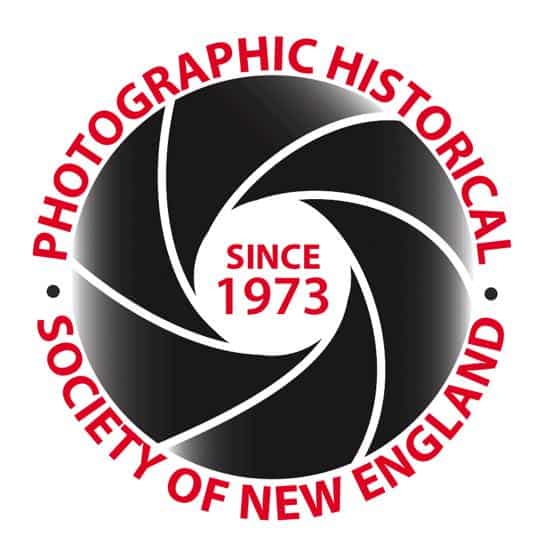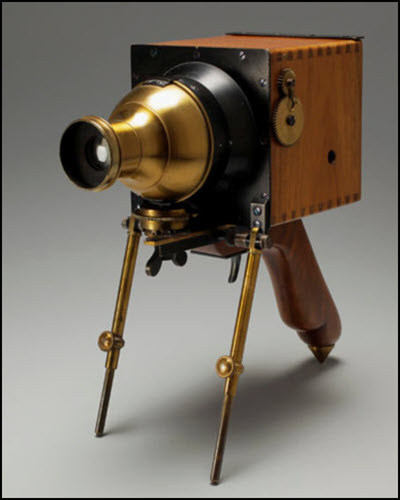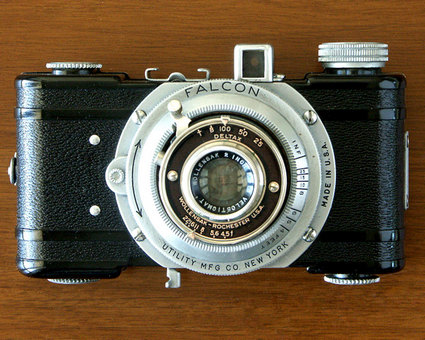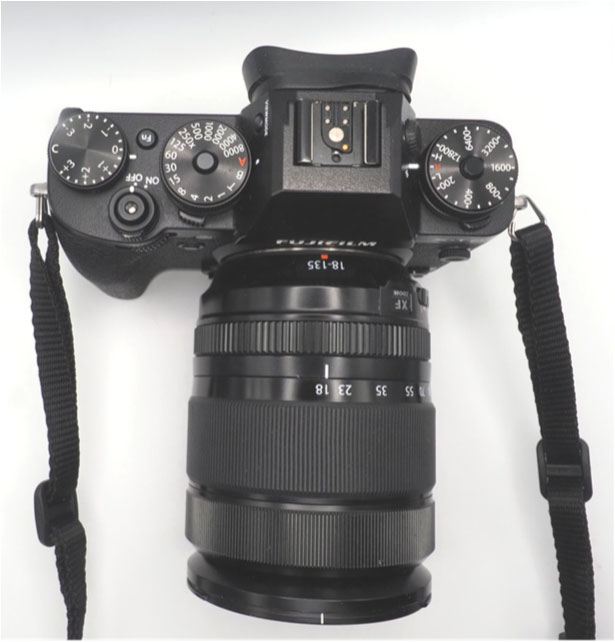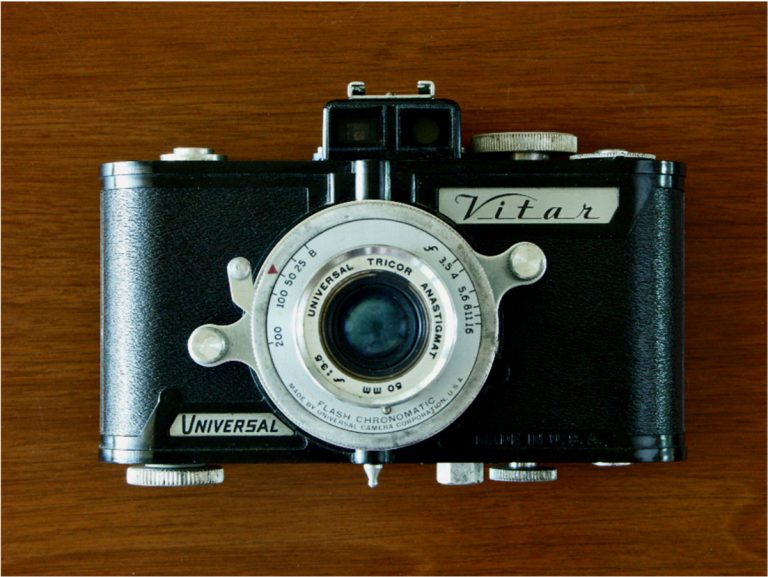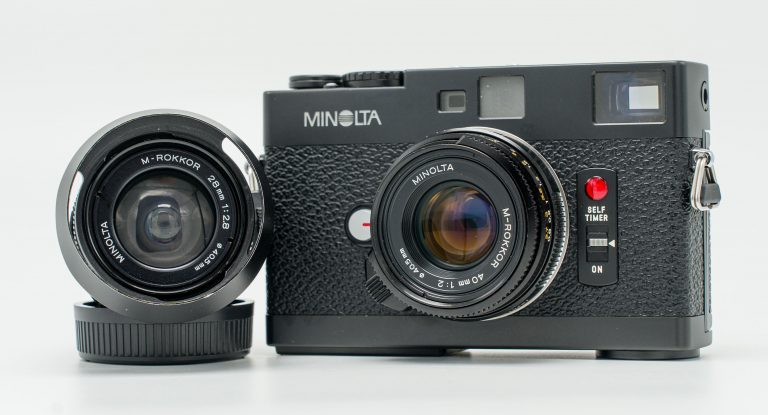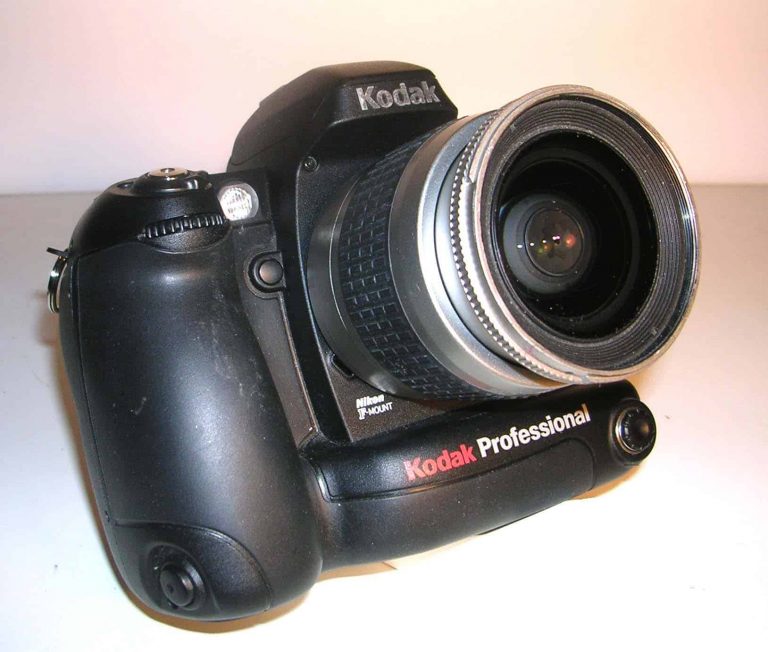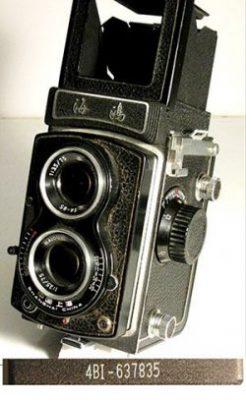The year 1888 saw the introduction of the original Kodak camera. In the same year, Albert Darier was granted the first Swiss patent for photography, number 17, for a light-weight, handheld camera he called the Escopette. It used Kodak original roll film to create 110 exposures (size 68 x 72 mm).
“The Escopette’s name stems from the gun bearing the same name, because of its shape: the camera was mounted on a pistol grip, and a trigger served as the shutter release.” (Swiss Camera Museum) The shutter release is part of the pistol grip; the camera is fired like a weapon, aimed at the subject and fired. It had no viewfinder; instead, sight-lines were drawn on the body. Its portability enabled amateurs to photograph scenes and events quickly and easily.
Manufactured by E.V. Boissonas (c. 1888), the Escopette was constructed of wood, though the front was made of metal. It had a “carved wooden handle, accompanied by polished brass support legs to serve as a tripod and brass hardware to mechanize the film advancement. It was fitted with a Steinheil Periscopic f/6 90mm lens and spherical shutter with trigger release.” (HistoricCamera.com)
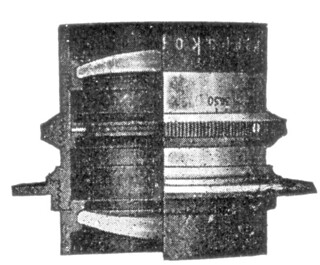
A periscopic lens is a symmetrical lens, consisting of two equal convex meniscus elements with the aperture between them. It was first made bySteinheil in 1865 (the origin of the name is simply that Periscop was Steinheil’s name for their product). Its simplicity (with no cemented elements) makes it cheap, and such lenses are found quite widely on simple popular cameras [for example, the Vest Pocket Kodak] and some box cameras).” (see Periscopic lens) Using a wheel just below the lens to adjust the shutter tension, exposure times could vary from 1/25 to 1/100 sec. A key below the shutter is used to cock it. The lens has to be removed to change the sliding stops.
The Escopette was not the first pistol-shaped camera. “[The] design had been employed previously by Skaife and Enjalbert, but the Escopette was more elaborate. It could be rested on a flat surface for time exposures, and it had a pair of hinged, collapsible legs mounted on the bottom front of the camera body which could be adjusted in length and served, with the pistol grip, to create a tripod.” (A Century of Cameras, From the Collection of the International Museum of Photography at George Eastman House, by Eaton S. Lothrop, Jr., p.44)
The size of the finished wooden box was a modest 3 1/2 x 3 1/4 x 3 3/4 inches; with legs extended, the maximum dimensions were 3 3/4 x 7 x 8 1/4 inches. The Escopette received a silver medal at the Paris Exposition of 1889. It is a rare camera found only in a handful of museums and collections including the Eastman Museum in Rochester, NY. McKeown’s Price Guide to Antique Classic Cameras, 1997/1998 describes the camera as “rare” with an estimated value of $8,000+ (about $14,765 in today’s dollars, assuming its value held up).
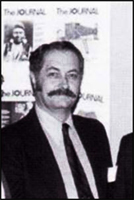
Editor’s note: The late Eaton S. Lothrop, Jr. (d. 2008), a well-known photo historian and author of A Century of Cameras (1973; 1983) quoted above, was a charter member of PHSNE. He served on the first Board of Directors and was PHSNE’s first elected vice-president. He was awarded an honorary life membership in 1983.
What the heck…
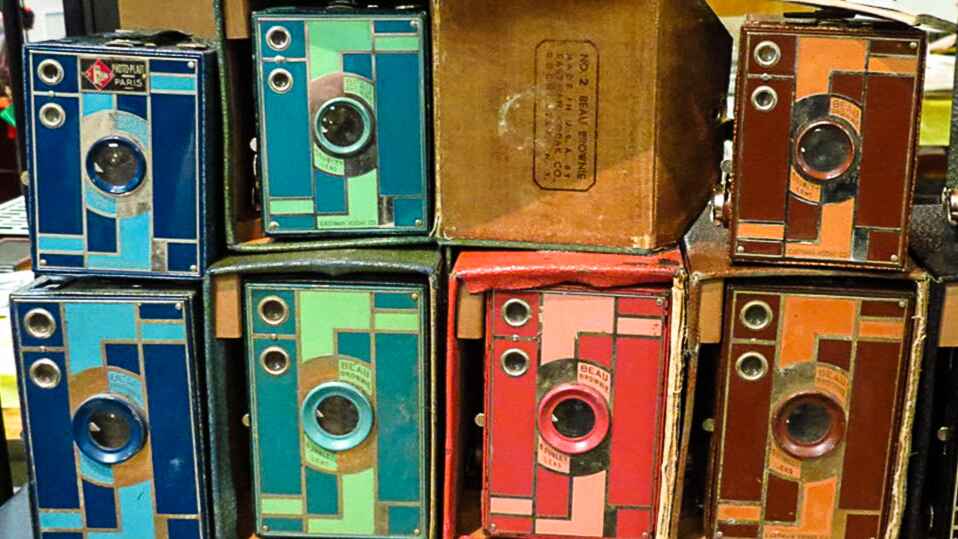
Are Those Even Cameras?!
Join the PHSNE Newsletter and learn more about photographic history and preservation. Already an expert? Come and share your collections and knowledge as we celebrate the history and advancement of photography.
